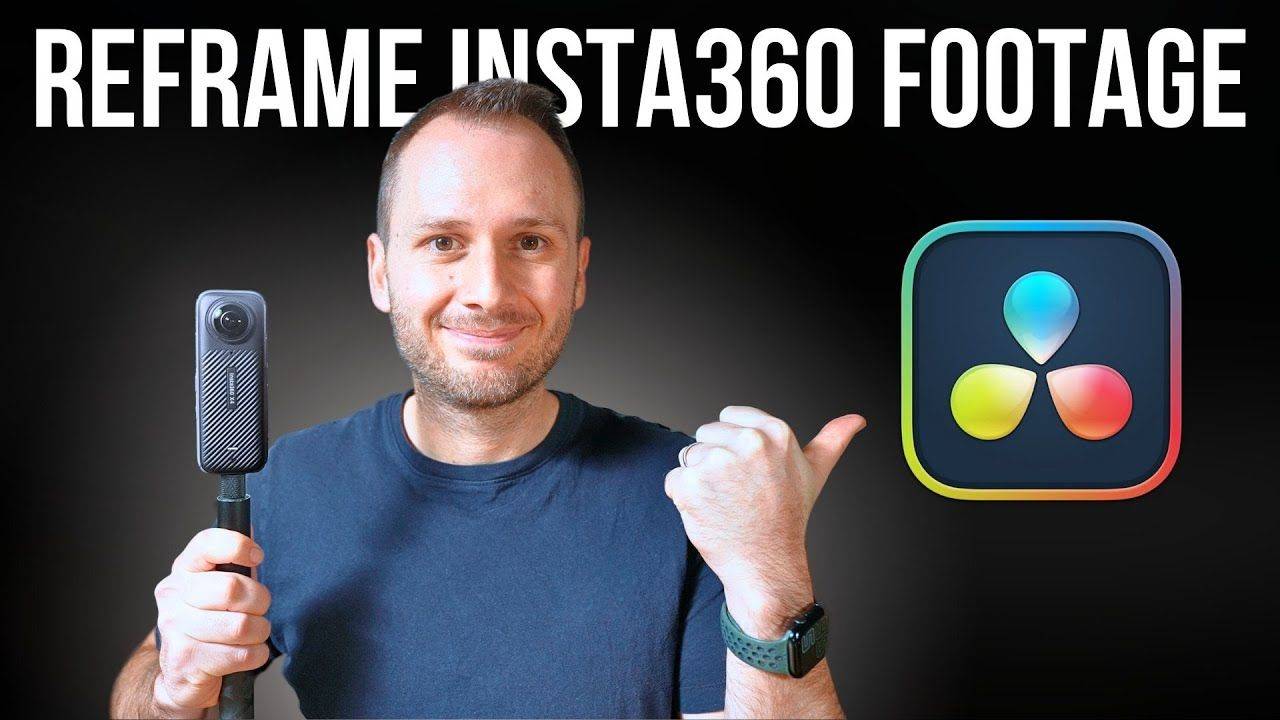Mastering Insta360 Video Editing with DaVinci Resolve
Aug 06, 2024
Are you ready to take your 360 video editing to the next level? Imagine harnessing the power of a top-tier video editor that not only handles your regular projects with ease but also excels in the intricate world of 360-degree footage.
And the best part? It's free.
Meet DaVinci Resolve—the ultimate tool for Insta360 camera enthusiasts looking to streamline their workflow and elevate their creative potential.
One of the main benefits of reframing in DaVinci Resolve is the efficiency it brings to your workflow. By doing everything in one editor, you avoid the hassle of constantly switching back and forth between Insta360 Studio and DaVinci Resolve. This is particularly helpful when you need to make quick adjustments to your framing, such as when you're syncing edits to music and need to shift the framing by a second or two.
Getting Started with DaVinci Resolve 🏁
Step 1: Export from Insta360 Studio
Begin your editing process in Insta360 Studio by stitching your shots and exporting them in the 2x1 equirectangular format. Select your clip, click the yellow button, and choose "Export 360 Video" instead of "Export Reframed Video." Set the bitrate to 100 and use H.265 as the encoding format. Click "Start Export" to stitch your shots and save them to your computer.

Step 2: Download DaVinci Resolve
Next, download DaVinci Resolve. The free version is sufficient for most needs, but the paid version allows you to export up to 32k video resolution, which is ideal for VR content. For typical 360 videos reframed into a flat perspective, the free version, which supports up to 4K resolution, will work perfectly.
Step 3: Install the KartaVR Plug-in
To reframe in DaVinci, download the third-party KartaVR plug-in. Open DaVinci Resolve, go to the Fusion tab, drag and drop the plug-in file, and then click "Install and Launch."
If you encounter errors, use the "Custom Install Path" option. Once installed, choose the “Kartaverse” option, scroll to "Reframe 360 Ultra," and download it. Restart DaVinci Resolve to refresh with the new plug-in installed.

Step 4: Adjust Project Settings
Head to File > Project Settings in DaVinci Resolve. In the Image Scaling menu, change "Mismatched Resolution Files" to "Stretch Frame to All Corners." This avoids black holes at the top and bottom of your video. Save the settings, and import your footage.
Reframing Your 360 Video in DaVinci Resolve 💻
With your footage on the timeline, trim as needed and apply the KartaVR Reframe 360 Ultra plug-in from the Toolbox tab. Use the Inspector to adjust parameters like Field of View, Pitch, Yaw, Roll, and Rectilinear Projection to achieve your desired framing. Avoid the Tiny Planet projection option as it can distort the borders.

To animate your framing, set keyframes for the desired parameters at different points along the timeline. Adjust these keyframes to create smooth transitions between viewpoints. For fine-tuning, use the Spline menu in the Fusion tab to smooth out transitions and control the speed and length of each keyframe transition.
Final Touches and Smooth Transitions 🖱️
After setting up your keyframes, smooth out transitions by selecting all keyframes in the Spline panel and clicking the button to smooth them. Adjust individual transitions as needed for the best results. Regularly play back your video to ensure smooth animations.

Conclusion ✅
By following this process, you can efficiently reframe your 360 videos directly in DaVinci Resolve, saving time and enhancing your workflow. Although the setup might seem complex initially, it quickly becomes second nature, allowing you to reframe at lightning speed.
Now that you know how to reframe your 360 videos in DaVinci Resolve, check out my 360 Video 101 course for tips on capturing amazing content with your Insta360 camera.
Full YouTube Video. 👇


